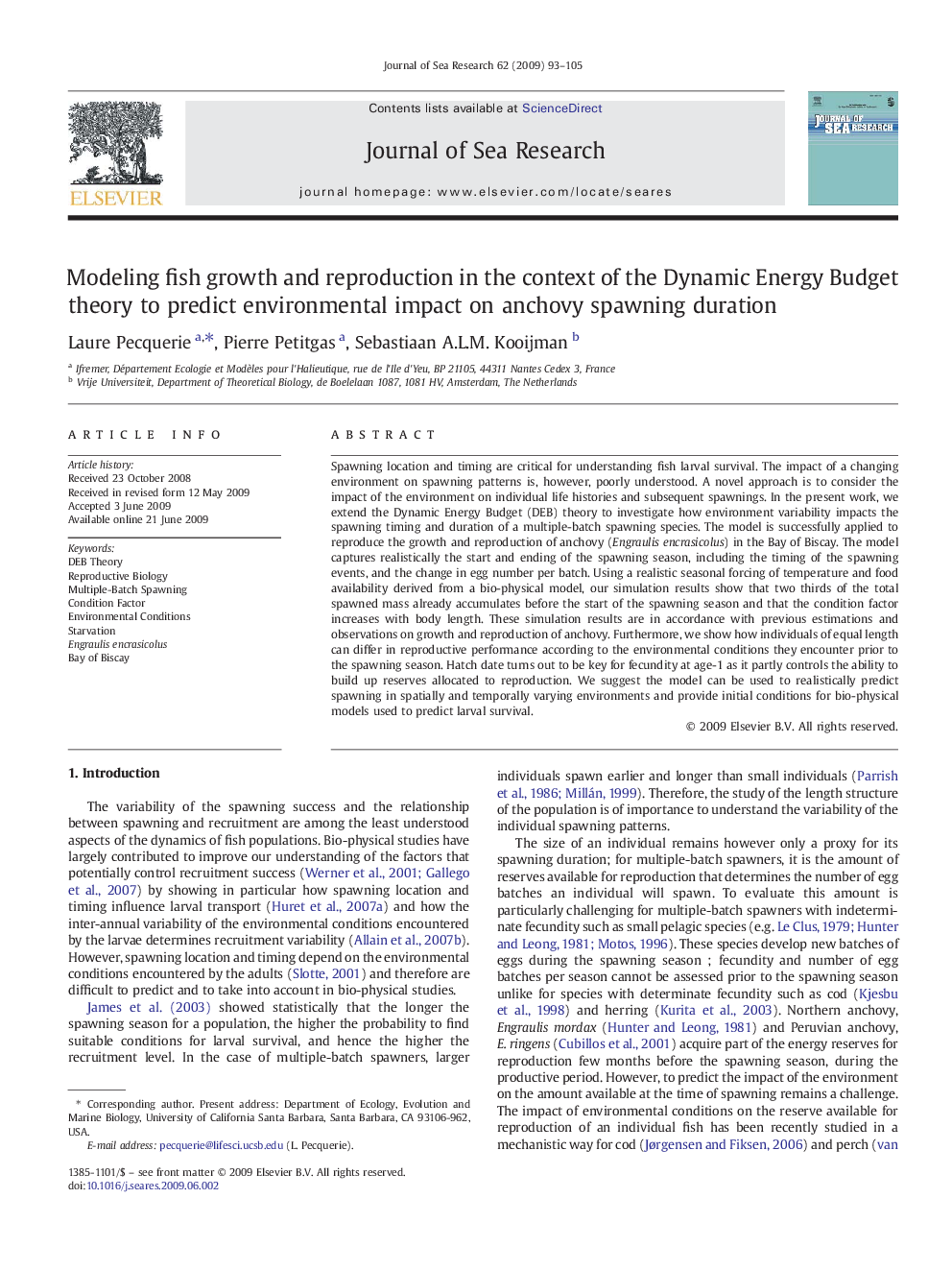| Article ID | Journal | Published Year | Pages | File Type |
|---|---|---|---|---|
| 4550289 | Journal of Sea Research | 2009 | 13 Pages |
Spawning location and timing are critical for understanding fish larval survival. The impact of a changing environment on spawning patterns is, however, poorly understood. A novel approach is to consider the impact of the environment on individual life histories and subsequent spawnings. In the present work, we extend the Dynamic Energy Budget (DEB) theory to investigate how environment variability impacts the spawning timing and duration of a multiple-batch spawning species. The model is successfully applied to reproduce the growth and reproduction of anchovy (Engraulis encrasicolus) in the Bay of Biscay. The model captures realistically the start and ending of the spawning season, including the timing of the spawning events, and the change in egg number per batch. Using a realistic seasonal forcing of temperature and food availability derived from a bio-physical model, our simulation results show that two thirds of the total spawned mass already accumulates before the start of the spawning season and that the condition factor increases with body length. These simulation results are in accordance with previous estimations and observations on growth and reproduction of anchovy. Furthermore, we show how individuals of equal length can differ in reproductive performance according to the environmental conditions they encounter prior to the spawning season. Hatch date turns out to be key for fecundity at age-1 as it partly controls the ability to build up reserves allocated to reproduction. We suggest the model can be used to realistically predict spawning in spatially and temporally varying environments and provide initial conditions for bio-physical models used to predict larval survival.
